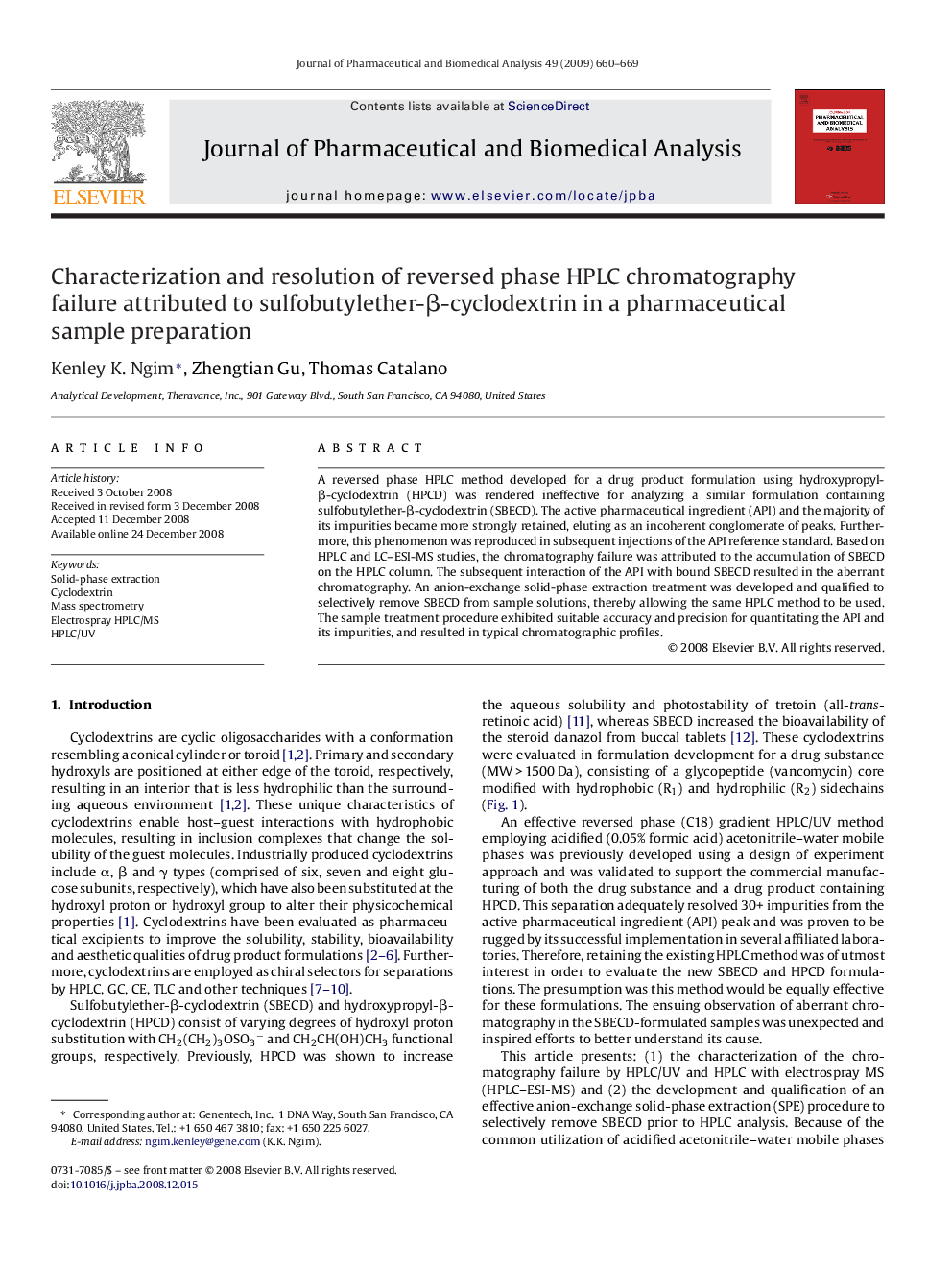| Article ID | Journal | Published Year | Pages | File Type |
|---|---|---|---|---|
| 10553645 | Journal of Pharmaceutical and Biomedical Analysis | 2009 | 10 Pages |
Abstract
A reversed phase HPLC method developed for a drug product formulation using hydroxypropyl-β-cyclodextrin (HPCD) was rendered ineffective for analyzing a similar formulation containing sulfobutylether-β-cyclodextrin (SBECD). The active pharmaceutical ingredient (API) and the majority of its impurities became more strongly retained, eluting as an incoherent conglomerate of peaks. Furthermore, this phenomenon was reproduced in subsequent injections of the API reference standard. Based on HPLC and LC-ESI-MS studies, the chromatography failure was attributed to the accumulation of SBECD on the HPLC column. The subsequent interaction of the API with bound SBECD resulted in the aberrant chromatography. An anion-exchange solid-phase extraction treatment was developed and qualified to selectively remove SBECD from sample solutions, thereby allowing the same HPLC method to be used. The sample treatment procedure exhibited suitable accuracy and precision for quantitating the API and its impurities, and resulted in typical chromatographic profiles.
Related Topics
Physical Sciences and Engineering
Chemistry
Analytical Chemistry
Authors
Kenley K. Ngim, Zhengtian Gu, Thomas Catalano,
